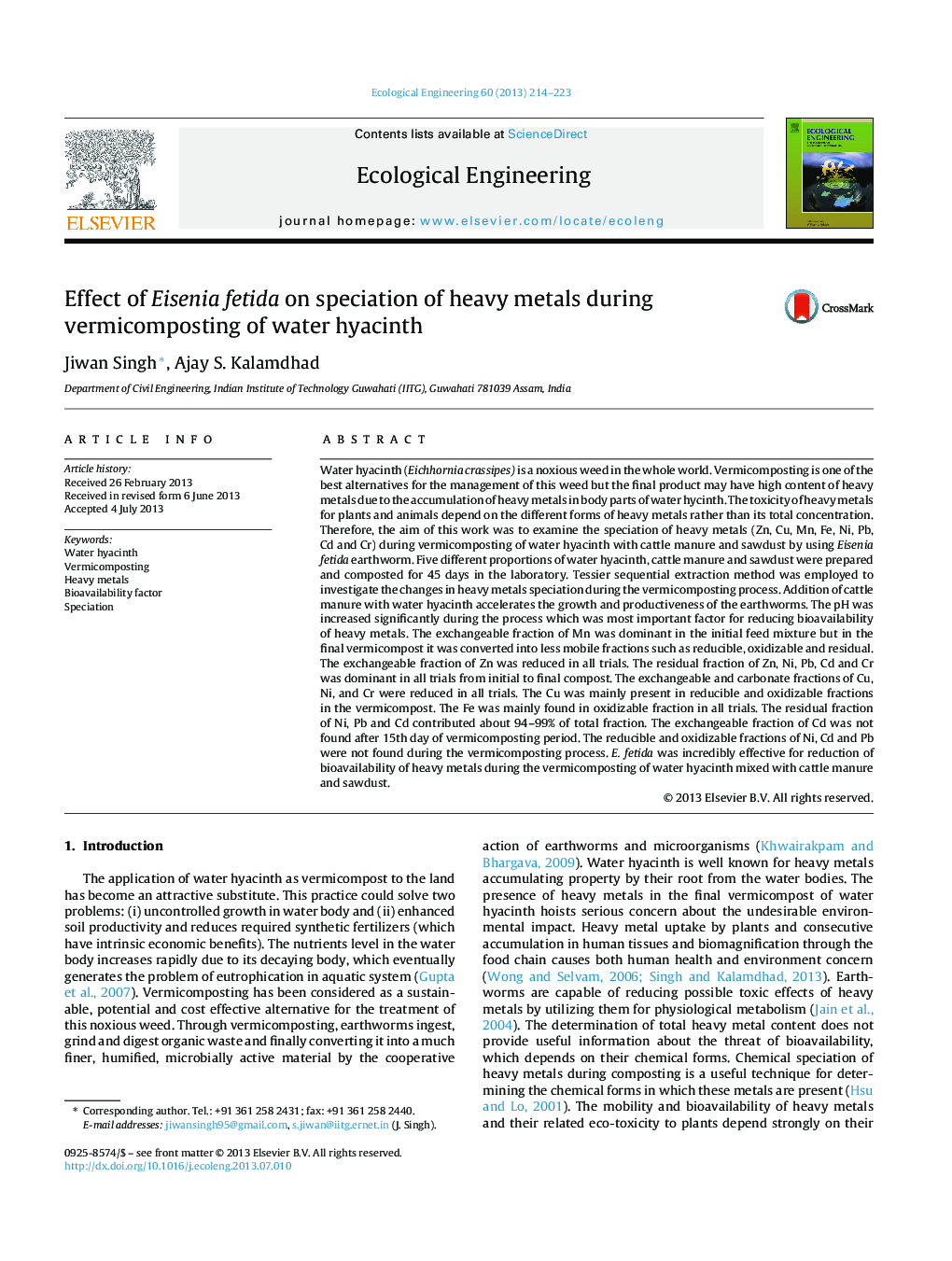| کد مقاله | کد نشریه | سال انتشار | مقاله انگلیسی | نسخه تمام متن |
|---|---|---|---|---|
| 6302397 | 1618038 | 2013 | 10 صفحه PDF | دانلود رایگان |
عنوان انگلیسی مقاله ISI
Effect of Eisenia fetida on speciation of heavy metals during vermicomposting of water hyacinth
ترجمه فارسی عنوان
تاثیر عصیانة فاطمه بر ویژگی های فلزات سنگین در زمان ورمی کمپوست جوانه زنی آب
دانلود مقاله + سفارش ترجمه
دانلود مقاله ISI انگلیسی
رایگان برای ایرانیان
کلمات کلیدی
سنبلچه آب ورمی کمپوستینگ، فلزات سنگین، فاکتور بیوپیواسالی، خاصیت،
موضوعات مرتبط
علوم زیستی و بیوفناوری
علوم کشاورزی و بیولوژیک
بوم شناسی، تکامل، رفتار و سامانه شناسی
چکیده انگلیسی
Water hyacinth (Eichhornia crassipes) is a noxious weed in the whole world. Vermicomposting is one of the best alternatives for the management of this weed but the final product may have high content of heavy metals due to the accumulation of heavy metals in body parts of water hycinth. The toxicity of heavy metals for plants and animals depend on the different forms of heavy metals rather than its total concentration. Therefore, the aim of this work was to examine the speciation of heavy metals (Zn, Cu, Mn, Fe, Ni, Pb, Cd and Cr) during vermicomposting of water hyacinth with cattle manure and sawdust by using Eisenia fetida earthworm. Five different proportions of water hyacinth, cattle manure and sawdust were prepared and composted for 45 days in the laboratory. Tessier sequential extraction method was employed to investigate the changes in heavy metals speciation during the vermicomposting process. Addition of cattle manure with water hyacinth accelerates the growth and productiveness of the earthworms. The pH was increased significantly during the process which was most important factor for reducing bioavailability of heavy metals. The exchangeable fraction of Mn was dominant in the initial feed mixture but in the final vermicompost it was converted into less mobile fractions such as reducible, oxidizable and residual. The exchangeable fraction of Zn was reduced in all trials. The residual fraction of Zn, Ni, Pb, Cd and Cr was dominant in all trials from initial to final compost. The exchangeable and carbonate fractions of Cu, Ni, and Cr were reduced in all trials. The Cu was mainly present in reducible and oxidizable fractions in the vermicompost. The Fe was mainly found in oxidizable fraction in all trials. The residual fraction of Ni, Pb and Cd contributed about 94-99% of total fraction. The exchangeable fraction of Cd was not found after 15th day of vermicomposting period. The reducible and oxidizable fractions of Ni, Cd and Pb were not found during the vermicomposting process. E. fetida was incredibly effective for reduction of bioavailability of heavy metals during the vermicomposting of water hyacinth mixed with cattle manure and sawdust.
ناشر
Database: Elsevier - ScienceDirect (ساینس دایرکت)
Journal: Ecological Engineering - Volume 60, November 2013, Pages 214-223
Journal: Ecological Engineering - Volume 60, November 2013, Pages 214-223
نویسندگان
Jiwan Singh, Ajay S. Kalamdhad,
